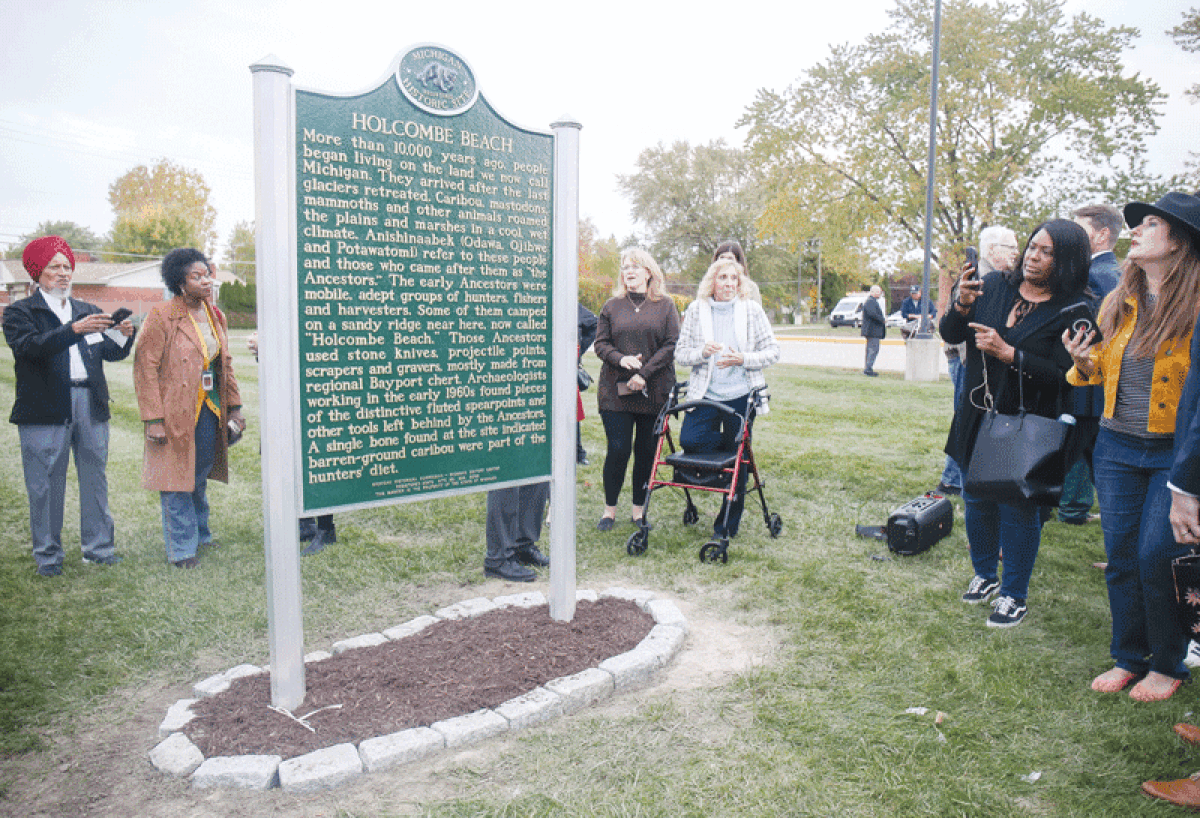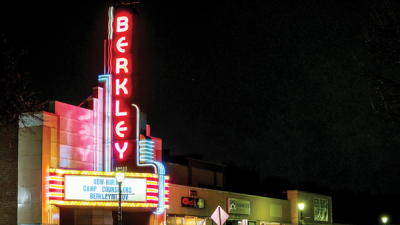STERLING HEIGHTS — A green roadside landmark inscribed with gold text serves as a portal to prehistory.
Officials from Sterling Heights and Utica Community Schools joined history enthusiasts and community supporters Oct. 23 for the unveiling of an updated historical marker sign that tells the story of the Holcombe Beach settlement.
Indigenous people dwelled in the area over 10,000 years ago, according to archaeologists who excavated the site in the early 1960s.
The Holcombe Beach marker sign is located along Dodge Park Road north of Metropolitan Parkway, just outside Heritage Junior High School and the Gene L. Klida Utica Academy for International Studies.
A similar, previous historical marker was reportedly installed in the same area in 1977, but officials said the original sign had been aging and getting worn.
During the unveiling, Sterling Heights Mayor Pro Tem Liz Sierawski welcomed the new sign.
“(We’re) so excited to unveil this redone, improved sign that marks the … confirmation of Indigenous people being here,” she said.
The new marker also gives fresh details about the Holcombe Beach site. The sign says an Indigenous group of peoples called the Anishinaabek — which includes the Odawa, Ojibwe and Potawatomi peoples — consider the Holcombe Beach settlers to be among “the Ancestors.”
The marker credits “avocational archaeologist” Jerry DeVisscher for finding artifacts in the vicinity in 1960 and adds that, by 1961, archeologists from the University of Michigan followed up with excavation work. The “Holcombe” name reportedly comes from the Holcombe Sod Farm that had been the site of the dig.
The updated marker said some Ancestors lived “on a sandy ridge” and wielded tools such as spearpoints and stone knives. Researchers also discovered a caribou bone, which suggested that the Ancestors had hunted those animals.
“Later, research determined that the lake associated with the beach ridge was gone well before people left the tools and bone that identify the site as one of the oldest in Michigan,” the marker sign adds.
During the sign unveiling, Michigan Historical Commission President Brian James Egen said his organization oversees the marker program, which he said has installed almost 1,800 markers that are designed to educate and inspire.
“Each of these markers tell a small but significant portion of our state’s past, in this case extending thousands of years back,” he said. “When viewed collectively as a whole, they provide a redolent mosaic of the Great Lakes State.”
According to Sterling Heights Historical Commission Chair Bryan Wojciechowski, the process to update the marker started almost two years ago, and he praised the results for offering “a more comprehensive and inclusive narrative.”
“It is important to remember that, in time, future generations may gain even deeper insights, and our current knowledge might be expanded or even corrected,” he explained. “That is the nature of history — ever fluid and ever changing.”
Wojciechowski added that pictures of the Holcombe excavation will be part of an exhibit at the Sterling Heights Community Center in November for National Native American Heritage Month.
Learn more about the Holcombe Beach site by visiting www.sterlingheights.gov/654/Prehistoric-History.
 Publication select ▼
Publication select ▼


























